Bildgespräche (Picture Conversations)—Peter Brandes and the Last Portraits of Hölderlin †
Abstract
1. The Artist Peter Brandes: A “Kulturwanderer”
[…] und seine Werke betrachtet, der erfährt augenblicklich, dass das scheinbare Antike in die Gegenwart reicht, sich erneuert hat in Gestalt und zeitlosen Formen der ungelösten alten menschlichen Konflikte, sich wiederholt in betörenden wie auch grausamsten, nicht abgeschlossenen Erzählungen.
[…] and views his works, immediately realizes that what appears to belong to antiquity extends into the present; it has renewed itself in the shapes and timeless forms of unresolved, ancient human conflicts, repeating itself in beguiling, and in most cruel, unfinished stories.
In contemporary art, there are scarcely any other artists for whom a new interpretation of classical Kulturwanderung [cultural migration] is as central as it is for Peter Brandes. There is only one other example of a similar cultural migration, and that is found in the work of Anselm Kiefer.
The concept of Kulturwanderung goes back far in Western culture. It designates the way in which art forms, sciences, and ideas migrate from people to people, from culture to culture.
For Peter Brandes, cultural migration is first and foremost a fact inscribed in his family history. But his family history is only an occasion for the migration among cultures that he undertakes with his art. Brandes understands his artistic activity as cultural migration. He is in uninterrupted conversation with his history, and as a result is in continuous dialogue with the most varied array of cultures.
But it is Mediterranean culture, the interaction between Judaism, Christianity, and Hellenism, and the products of culture in that region, that have been the greatest driving force in my art.(Brandes quoted in Rocca 2019, p. 11 and note 7)
Die Konstellation zwischen den drei Persönlichkeiten, ihre Gedanken und ihr Ausdruck ist mein Versuch, einen Aktualisierungsprozess anzustoßen—im Umkreis eines der wichtigsten Dichter Deutschlands, Friedrich Hölderlin.7
The constellation between the three personalities, their thoughts and their words, is my attempt to initiate a process of updating—within the circle of one of Germany’s most important poets, Friedrich Hölderlin.
Als Isidor Brandes vor dem Rektoratsbüro wartete, hörte er, wie drinnen aus dem Faust deklamiert wurde. […], klopfte und übernahm die Rolle des Mephisto, bis die Tür aufgerissen wurde und ein verwunderter Rektor und sein Gast herausstürzten: Poul Reumert[h], einer der bedeutendsten und in Europa bekannten Schauspieler Dänemarks.14
As Isidor Brandes waited outside the rector’s office, he heard recitations from Faust coming from inside. [...], he knocked and took on the role of Mephisto until the door flew open and a surprised rector and his guest rushed out: Poul Reumert[h], one of Denmark’s most important and well-known actors in Europe.
Ich habe immer an meinen Großvater denken müssen. Also machte ich die Vase für Yad Vashem [1995]. Die Vase als symbolisches Vorratsgefäß für Öl und Wein, als Urne für Gebeine und Asche und als Symbol für das Spirituelle, den Geist und den Glauben, denn auch Texte, die man im Toten Meer fand, wurden in solchen Gefäßen aufbewahrt. Sie sind mit ihren fünf Metern Höhe monströs, diese Vasen. Monströs wie die Tötungen. Ich kann das nicht begreifen, aber so habe ich meinem Großvater Isaak Brandes ein bisschen Ruhe bereitet.16
I always had to think of my grandfather. So I made the vase for Yad Vashem [1995]. The vase as a symbolic storage vessel for oil and wine, as an urn for bones and ashes and as a symbol of the spiritual, the mind and faith, because the texts that were found in the Dead Sea were also kept in such vessels. At five meters high, these vases are monstrous. Monstrous like the killings. I cannot understand it, but in this manner I have given my grandfather Isaak Brandes a little peace.
Erst ein Jahr nach dem Krieg kam die Schwester [Eleonore] meines Vaters aus der Schweiz nach Paris zurück. Sie entdeckte ihre Mutter, wie sie in Mülltonnen nach Essbarem suchte. Das war ein Schock für beide, ein größerer für meine Großmutter, denn drei Tage nachdem sie gefunden worden war, versuchte sie, sich umzubringen.17
It was not until a year after the war that my father’s sister [Eleonore] returned to Paris from Switzerland. She discovered her mother searching through garbage cans for anything edible. It was a shock for both of them, but even more so for my grandmother because, three days after she was found, she attempted to take her own life.
2. Portraits of Hölderlin from His Time in the Zimmer House on the Neckar
Ja, die Gedichte sind echt, die sind von mir, aber der Name ist gefälscht, ich habe nie Hölderlin geheißen, sondern Scardanelli oder Scarivari oder Salvator Rosa oder so was.21
Yes, the poems are genuine, they are mine, but the name is fake, my name was never Hölderlin, but Scardanelli or Scarivari or Salvator Rosa or something like that.
Sein dichterischer Geist zeigt Sich noch immer thätig, so sah Er bey mir eine Zeichnung von einem Tempel Er sagte mir ich solte einen von Holz so machen, ich versetze Ihm drauf daß ich um Brod arbeiten müßte, ich sey nicht so glüklich so in Philosofischer ruhe zu leben wie Er, gleich versetze Er, Ach ich bin doch ein armer Mensch, und in der nehmlichen Minute schrieb Er mir folgenden Vers mit Bleistift auf ein Brett
Die Linien des Lebens sind Verschieden
Wie Wege sind, und wie der Berge Gränzen.
Was Hir wir sind kan dort ein Gott ergänzen
Mit Harmonien und ewigem Lohn und Frieden.27
His poetic spirit is still active. Once he saw a drawing of a temple in my house. He told me I should make one out of wood like that, I told him I had to work for my bread, I was not as lucky to live in philosophical peace as he was; he immediately replied, oh, but I am a poor man, and at that same moment he wrote the following verse in pencil on a board for me:
The lines of life are various; they diverge and cease
Like footpaths and the mountains‘ utmost ends.
What here we are, elsewhere a God amends
With harmonies, eternal recompense and peace.(Hölderlin 2004, p. 745)
Hölderlin war und ist noch ein großer Natur Freund und kan in seinem Zimmer daß ganze Näkerthal samt dem Steinlacher Thal übersehen. […] jezt ist es 30 Jahr daß er bei mir ist. Ich habe keine Beschwerlichkeiten mehr von ihm, aber früher war er oft Rasend, daß Blut stieg ihm so in Kopf daß er oft ziegelroth aussah und dan alles Beleidigte was ihm ingegen kam. War aber der Paroxismus vorbei, so war er auch immer der erste welcher die Hand zur versühnung Bot. Hölderlin ist Edelherzig hat ein tiefes Gemüth, und einen ganz gesunden Körper, ist so lang er bei mir ist, nie krank geweßen. Seine Gestalt ist schön u. wohlgebaut, ich hatte noch kein schöneres Auge bei einem sterblichen gesehen als Hölderlin hatte; Er ist jezt 65 Jahre alt ist aber noch so munter und lebhaft als wenn er erst 30 wäre Daß Gedicht daß beifolgt hat er in 12 Minuten niedergeschriben, ich foderde ihn dazu auf mir auch wieder etwas zu schreiben, er machte nur daß Fenster auf, that einen Blick ins Freue, und in 12 Minuten war es fertig. Hölderlin hat keine Fixe Idee, er mag seine Fantasie auf Kosten des Verstandts bereichert haben.28
Hölderlin was and still is a great friend of nature and can look out over the entire Neckar valley, including the Steinlach valley, from his room. […] It is now 30 years since he has been with me. I have no more problems with him, but in the past he often raged, the blood rushed so much to his head that he often turned brick red and then everything that came his way he insulted. But when the paroxysm had passed, he was always the first to offer a hand of reconciliation. Hölderlin is noble-hearted, has deep soul and a completely healthy body, and has never been ill as long as he has been with me. His form is beautiful and well-built; I have never seen more beautiful eyes in a mortal than Hölderlin’s. He is now 65 years old but is still as sprightly and lively as if he were only 30. He wrote the poem that follows in 12 minutes, I requested him to write something again for me, he just opened the window, looked out into the free air, and in 12 minutes it was finished. Hölderlin has no idée fixe, he might have enriched his imagination at the expense of his reason.
Der Hyperion verdient die Unsterblichkeit so gut als Werther, und besser als die Messiade. […] Hölderlin ist einer der trunkenen, gottbeseelten Menschen, wie wenig die Erde hervorbringt, der geweihte heilige Priester der heiligen Natur!30
Hyperion deserves immortality as much as [Goethe’s] Werther, and more so than [Klopstock’s] Messiah. […] Hölderlin is one of the inebriated, god-inspired people that the earth so rarely produces, the consecrated holy priest of holy nature!
Die Natur, ein hübscher Spaziergang, der freye Himmel that ihm immer gut. Ein Glück für ihn ist es, daß er von seinem Zimmerchen aus eine wirklich recht lachende Aussicht auf den Neckar, der sein Haus bespült, und auf ein liebliches Stück Wiesen- und Berglandschaft genießt. Davon gehen noch eine Menge klarer und wahrer Bilder in die Gedichte über, die er schreibt, wenn ihm der Tischler Papier gibt.33
Nature, a pleasant walk, the open sky always did him good. It is fortunate for him that from his little room he enjoys a really lovely view of the Neckar, which washes up against his house, and of a lovely slice of meadow and mountain landscape. Many clear and true images of all this pass over into the poems that he writes when the carpenter gives him paper.
Rudolf Lohbauer und G. Schreiner (Lithograph) besuchten mich in Tübingen; ich führte sie auch zu Hölderlin; nachher zeichneten sie, gleichsam wehmütig spielend, das Profil des armen Mannes miteinander auf einen Wisch Papier.35
Rudolf Lohbauer and G. Schreiner (lithographer) visited me in Tübingen; I also took them to Hölderlin; afterwards, playing around wistfully, they drew the poor man’s profile together on a piece of paper.
Seine körperliche Kräften sind noch immer gut auch hat er noch imer einen starken Apedit, in seinem Gesicht Ältert Er etwas, weil Er die vodere Zähne verlohren hat, stehen die Lippen einwärz und daß Kenn hervor.41
His physical strength is still good and he still has a good appetite. He is aging a little in his face because he has lost his front teeth, his lips are sunken and his chin is prominent.
Ich faßte seine Physiognomie recht scharf in’s Auge, es war mir anfangs schwer, mich darein zu finden, weil ich mir das jugendlich schöne Bild nicht gleich verscheuchen konnte, doch überwand ich mich und beachtete die tiefen Runzeln seines Gesichtes nicht mehr. Die Stirn ist hoch und ganz senkrecht, die Nase sehr regelmäßig, ziemlich stark, aber in ganz gerader Linie vorgehend, der Mund klein und fein und wie das Kinn und die untern Theile des Gesichts überhaupt sehr zart. Einigemal, besonders, wenn er einen recht melodischen Passus ausgeführt hatte, sah er mich an; seine Augen, die von grauer Farbe sind, haben einen matten Glanz, aber ohne Energie, und das Weiße daran sieht so wächsern aus, daß mich schauerte.42
I took a very close look at his physiognomy, it was difficult at first to get used to it because I couldn’t immediately banish the youthful, beautiful image, but I overcame myself and no longer noticed the deep wrinkles in his face. The forehead is high and completely vertical, the nose very regular, quite strong, but completely straight, the mouth small and fine and, like the chin and the lower parts of the face, very delicate. A few times, especially after he had performed a very melodic passage, he looked at me; his eyes, which are grey in color, have a dull shine but without energy, and the whites of them look so waxy that I shuddered.
Was mir hauptsächlich auffiel, war, daß man ihn mit Blicken gar nicht recht fassen konnte, weil sein Auge gar keinen fixen Stern hat, wie es auch seiner Seele ganz an Sammlung und Concentration fehlt.43
What particularly struck me was that one could not really apprehend him with one’s gaze, because his eye has no fixed stare at all, just as his soul completely lacks concentration and focus.
Man bewundert das Profil, die hohe gedankenschwere Stirne, das freundliche freylich erloschene, aber noch nicht seelenlose liebe Auge; man sieht die verwüstenden Spuren der geistigen Krankheit in den Wangen, am Mund, an der Nase, über dem Auge, wo ein drückender schmerzlicher Zug liegt, und gewahrt mit Bedauren und Trauer die convulsivische Bewegung.44
One admires the profile, the high, deeply thoughtful forehead, the friendly, admittedly extinguished, but not yet soulless, kind eye; one sees the ravaging traces of mental illness in the cheeks, on the mouth, on the nose, above the eye, where there is an oppressing, painful expression, and one notices the convulsive movement with regret and sadness.
3. Brandes’ Bildgespräche (Picture Conversations) with Hölderlin and His Woodcuts
Zahlreiche romanische Granitskulpturen—in Dänemark vor allem mit christlicher Kunst motivisch verbunden—bilden ein künstlerisches Testament besonderer Stärke. Als dänischer Künstler muss man sich stets an diesen Werken, als wären sie Wegmarken, orientieren.
Eine Sandsteinskulptur, die im Freien steht, kann das dänische Klima nicht überstehen. Der Granit hingegen, der mit den Gletschern der Eiszeit aus Norwegen und Schweden bis in unser Land gebracht wurde und verstreut in der Landschaft zurückblieb, trotzt dem Frost, dem Wind und dem Salz des Meeres.
Die ’aufrecht stehenden‘ lakonischen Aussagen und Gedichte unserer Runeninschriften, die bis heute der Landschaft eingeschrieben sind, nutzen ebenfalls den Granit. Es versteht sich von selbst, dass ein so widerständiges Material wie der Granit, eine kraftvolle Einfachheit ausstrahlt, wenn er gekonnt verarbeitet ist. Hier gibt es keine überflüssigen Details.
Wenn ich für meine Bildgespräche mit Hölderlins letzten Gedichten, seinen sogenannten Turmgedichten, die Holzschnitttechnik gewählt habe, geschah es aus der Überzeugung, dass man im Charakter des Holzschnitts dieselbe einfache Kraft findet, die den Granit und die Turmgedichte kennzeichnet. Die gleiche Einfachheit und Stärke findet man in den Aussagen der Runen wieder. Als bilde das Ganze einen Kreis. Anfang und Ende, Leben und Tod sind durch ausgemeißelte ’Wegmarken‘ der Erinnerung miteinander verbunden. Gezeiten.
Die letzten Gedichte Hölderlins können, denke ich, nicht in gleicher Weise interpretiert werden, wie die Werke des bis 1806 noch bewusst gewesenen Dichters. Für einen bildenden Künstler bedeutet dies ein Ausschließen des Anekdotischen oder des Illustrativen als Methode. Eine illustrative Übereinstimmung mit einem Text interessiert mich nicht.
Als Bezeichnung meiner die späten Gedichte Hölderlins begleitenden Holzschnitte verwende ich deswegen den Ausdruck Bildgespräche.
Numerous Romanesque granite sculptures—in Denmark, the motifs of which are largely tied to Christian art—constitute an artistic testament of particular strength. As a Danish artist, one must always orient oneself to these works as if they were milestones.
A sandstone sculpture that stands outdoors cannot survive the Danish climate. Granite, on the other hand, which was brought to our country from Norway and Sweden with the glaciers of the Ice Age and remained scattered throughout the landscape, defies the frost, the wind and the salt of the sea.
The ‘upright’ laconic statements and poems of our runic inscriptions, which are still inscribed in the landscape today, also use granite. It goes without saying that a material as resilient as granite radiates a powerful simplicity when it is skillfully crafted. There are no superfluous details here.
When I chose the woodcut technique for my Bildgespräche with Hölderlin’s last poems, his so-called tower poems, it was out of the conviction that one can find the same simple power in the character of the woodcut that characterizes both the granite and the tower poems. This same simplicity and strength can be found in the runic texts. As if the whole formed a circle. Beginning and end, life and death are connected by chiseled ’milestones’ of memory. Ebb and flow.
Hölderlin’s last poems cannot, I believe, be interpreted in the same way as the works of the still cognizant poet up to 1806. For a visual artist, this means excluding anecdote or illustration as a method. I am not interested in an illustrative congruence to a text.
For this reason, I use the term Bildgespräche to describe my woodcuts accompanying Hölderlin’s late poems.
Solche Ergebnisse sind aber relativ, ebenso wie die Deutungen von Hölderlins Turmgedichten es immer sein müssen. Die Art dieses Entstehungsprozesses verrät etwas über meine Einstellung zur Illustration von Texten.
Such results are relative, just as the interpretations of Hölderlin’s tower poems always must be. The nature of this creative process reveals something about my attitude toward illustrating texts.
Charakteristisch ist die Haltung des Körpers, die energische Kraft des Kopfes und nicht zuletzt das “Hineingreifen” der rätselhaften Hand in den Raum. Dieser zeigende Finger hat mich fasziniert. Eine Waffe, ein Degen, ein Taktstock, ein Schlüssel, ein Ruf, ein Ausrufezeichen, eine Aussage, ein Versuch, ein Nagel, die Form eines Schattenrisses, eine Alternative zu nichts, eine Frage.—Der Finger, der nie einen Ehering trug, der Finger, der am Schreiben von Gedichten beteiligt war, der Finger, der das Fenster im Turmzimmer berührte, dort wo eine klare Fensterscheibe—als wäre der Augapfel Hölderlins von einer dünnen Haut überzogen—eine “Wand” zwischen der (Innen-)Welt und der Außenwelt des Dichters bildete.
In meinem vorläufig letzten Holzschnittentwurf taucht Hölderlin seine Hand in einen mohnfarbenen Fluss. “Gedächtnis und Mohn”52. Die Farbe des Blutes ist zugleich die Farbe des Lebens—sie glüht wie das Feuer. Wenn draußen vor dem Fenster der Tag beginnt, ist der Himmel rot. Und wenn draußen die Nacht vor das Fenster kommt, ist der Himmel rot. Die Gedichte sind zwischen die äußersten Punkte gespannt, und in ihrem zyklischen Verlauf wird der Dichter—einsam—mit sich selbst vereint.
The posture of the body, the energetic strength of the head and, last but not least, the “grasping” into space of the enigmatic hand are characteristic. The pointing finger fascinated me. A weapon, a sword, a baton, a key, a call, an exclamation mark, a statement, an attempt, a nail, the shape of a silhouette, an alternative to nothing, a question.—The finger that never wore a wedding ring, the finger that was involved in writing poems, the finger that touched the window in the tower room, where a clear window pane—as if Hölderlin’s eyeball were covered by a thin skin—formed a “wall” between the (inner) world and the outside world of the poet.
In my last woodcut design for the time being, Hölderlin dips his hand into a poppy-colored river. “Gedächtnis und Mohn” (Memory and Poppy). The color of blood is also the color of life—it glows like fire. When day begins outside the window, the sky is red. And when night comes outside the window, the sky is red. The poems are stretched between the outermost points, and in their cyclical course the poet—alone—is united with himself.
Hölderlin’s latest verses read:
Nun versteh’ ich den Menschen erst, da ich fern von ihm und in der Einsamkeit lebe.(StA 2.1, p. 340)
Now I understand man for the first time, since I live far from him and in solitude.
Will einer wohnen,So sei es an Treppen,Und wo ein Häuslein hinabhängtAm Wasser halte dich auf.Und was du hast, istAthem zu hohlen.56
If someone wishes to dwell,Let it be on stepsAnd where a small house hangs downNear water, there spend your days.And what is yours
Is to draw breath.(Hölderlin 2004, p. 653)
Funding
Conflicts of Interest
Image Credits
- 1 Friedrich Hölderlin. Pencil drawing by Johann Georg Schreiner and Rudolf Lohbauer, July 27, 1823. Written in Mörike’s hand on the drawing is the following: “Von Schreiner und Rudolph in Eile gezeichnet den 27sten Juli 23.” (Drawn in haste by Schreiner and Rudolph on July 27, 1823.) H. 22.4 × W. 21.0 cm. Original: Deutsches Literaturarchiv Marbach a.N., Inv.Nr. B 53.79.
- 2 Friedrich Hölderlin. Black chalk over pencil on vergé paper by Johann Georg Schreiner 1825/1826. H. 8.2 × W. 8.6 cm. Original: Freies Deutsches Hochstift/Frankfurter Goethe-Museum, Inv.Nr. III-03630.
- 3 Friedrich Hölderlin. Wax relief by W. Neubert, around 1840. H. 12 × W. 6.5 cm. Original: Deutsches Literaturarchiv Marbach a.N., Inv.Nr. 1299.
- 4 Friedrich Hölderlin. Pencil drawing by Louise Keller, 1842. H. 22.1 × W. 15.8 cm. Original: Deutsches Literaturarchiv Marbach a.N., Inv.Nr. B 54.10.
- 5 Peter Brandes: FH (Friedrich Hölderlin). Woodcut, 2009. (To Figure 1) H. 27.7 × W. 20 cm. Original: Courtesy Galerie Moderne, Silkeborg.
- 6 Peter Brandes: FH. Woodcut, 2009. (To Figure 3) H. 27.7 × W. 20 cm. Original: Courtesy Galerie Moderne, Silkeborg.
- 7 Peter Brandes: FH. Woodcut, 2009. (To Figure 3) H. 27.7 × W. 20 cm. Original: Courtesy Galerie Moderne, Silkeborg.
- 8 Peter Brandes: FH. Watercolor, 2009. (To Figure 3) H. 25.5 × W. 20 cm. Original: Courtesy Galerie Moderne, Silkeborg.
- 9 Peter Brandes: FH. Watercolor, 2009. (To Figure 3) H. 25.5 × W. 20 cm. Original: Courtesy Galerie Moderne, Silkeborg.
- 10 Peter Brandes: FH. Watercolor, 2009. (To Figure 3) H. 25.5 × W. 20 cm. Original: Courtesy Galerie Moderne, Silkeborg.
- 11 Peter Brandes: FH. Watercolor, 2009. (To Figure 3) H. 25.5 × W. 20 cm. Original: Courtesy Galerie Moderne, Silkeborg.
- 12 Peter Brandes: FH. Charcoal, pencil and colored chalk, 2009. (To Figure 3) H. 28 × W. 23 cm. Original: Courtesy Galerie Moderne, Silkeborg.
- 13 Peter Brandes: FH. Woodcut, 2009. (To Figure 4) H. 27.7 × W. 20 cm. Original: Courtesy Galerie Moderne, Silkeborg.
- 14 Peter Brandes: FH. Hand (6 Studies). Pencil, charcoal, colored chalk, ink and watercolor. (To Figure 2) H. 8.3 × W. 13.3 cm, 2009. Original: Peter Brandes’ Notizbuch (Peter Brandes’ notebook).
- 15 Peter Brandes: FH. Hand. Woodcut, 2009. (To Figure 2) H. 27.7 × W. 20 cm. Original: Courtesy Galerie Moderne, Silkeborg.
- 16 Peter Brandes: FH. Gedächtnis und Mohn (Memory and poppies). Woodcut, 2009. (To Figure 2) H. 27.7 × W. 20 cm. Original: Courtesy Galerie Moderne, Silkeborg.
- 17 Peter Brandes: The Sculpture Hölderlin—Celan—Heidegger. Clay, 2013. In Brandes’ studio, the sculpture was made in clay, after which he cast it in bronze. In front: Hölderlin and the hand; on the left: Celan; on the right: Heidegger (as a symbol: tree stump and hewn axe). Original: Hölderlinturm Tübingen. Inauguration, 4 May 2025. The Trilogy will be permanently installed in the cloister of the Evangelisches Stift in Tübingen.
- For their permission to reproduce their images we thank the Deutsches Literaturarchiv, Marbach a.N. (Figure 1 and Figure 4), the Freies Deutsches Hochstift/Frankfurter Goethemuseum (Figure 3), the Deutsches Literaturarchiv, Cotta-Archiv, Marbach a.N. (Figure 4) and Maja Lisa Engelhardt for permission to print the artistic works by Peter Brandes (Figure 5, Figure 6, Figure 7, Figure 8, Figure 9, Figure 10, Figure 11, Figure 12, Figure 13, Figure 14, Figure 15, Figure 16 and Figure 17).
| 1 | See the bibliographie in Rocca (2019, pp. 261–69). |
| 2 | (Rocca 2019, p. 10), note 1: “I used the concept of Kulturwanderung in connection with Peter Brandes’ oeuvre for the first time in the laudatio I delivered at the presentation to Peter Brandes of the Friedrich Hölderlin Preis in Tübingen on November 6, 2013. Later, Kulturwanderer was used in the title of Brandes’ Festschrift (Kulturvandrer: Festskrift til Peter Brandes i anledning af halvfjerdsårsdagen [Kulturwanderer: A Festschrift for Peter Brandes on the Occasion of His Seventieth Birthday], ed. Niels Jørgen Cappelørn, Johannes Riis, and Ettore Rocca (Cappelørn et al. 2014)). Most recently, the concept has been used as the subtitle of the 2019 exhibition at Johannes Larsen Museum.” |
| 3 | |
| 4 | He displayed the wooden sticks he worked with in a display case and explained how he selects his materials at the opening of his exhibition in the Hölderlin Tower in Tübingen/Germany in 2009. |
| 5 | Letter from Peter Brandes, September 9, 2015. In private ownership. |
| 6 | See also Rocca (2019, pp. 240–42). |
| 7 | See also Rocca (2019, pp. 240–42). |
| 8 | There is no family relationship between the Copenhagen Brandes family: Georg (1842–1927) and Edvard (1847–1931). |
| 9 | Rocca (2019, p. 16). |
| 10 | Rocca (2019, p. 16). |
| 11 | Brandes quoted in Baltzer (2008, p. 8). |
| 12 | Rocca has chosen the bronze sculpture, created according to etchings in 2018–2019 as the title image of his book. |
| 13 | From conversations with Peter Brandes; he loved this story and retold it many times. |
| 14 | Brandes quoted in Baltzer (2008, p. 9). |
| 15 | Peter Brandes thought that his grandfather was murdered in Auschwitz; he first learned in 2019, as confirmed and documented by Serge Klarsfeld (Rocca 2019, p. 21, note 27), that it happened in the camp of Sobibór. 250,000 Jews were murdered there. |
| 16 | Brandes quoted in Baltzer (2008, p. 9). |
| 17 | Brandes quoted in Baltzer (2008, p. 8). |
| 18 | Peter Brandes’ wife, Maja Lisa Engelhardt, provided me with names and dates; mail from August 31, 2025. |
| 19 | Baltzer gave the spelling of her name as “Höfer” (Baltzer 2008, p. 9), but Peter Brandes spelled it as “Hoffer” (Rocca 2019, p. 33). |
| 20 | |
| 21 | Report from Johann Georg Fischer in MA 3, p. 672. This was the miniature edition of Hölderlin’s poems, published by Cotta in November 1842. |
| 22 | C. T. Schwabs Tagebuch, February 25, 1841 (MA 3, p. 670): “Ich war am 12. Febr. Nachmittags einige Minuten bei Hölderlin, um ihm ein Exemplar seiner Gedichte, da ihm das seinige, in welchem einige angebundene Blätter mit neueren Gedichten beschrieben waren, gestohlen worden ist, zum Geschenk zu bringen.” (On the afternoon of February 12, I visited Hölderlin for a few minutes to give him a copy of his poems as a gift, since his own copy, which contained several attached sheets with newer poems, had been stolen). |
| 23 | Reproductions of the five early portraits are found in (Beck and Raabe 1970): 1786, p. 130 (Figure 20); 1788, p. 141 (Figure 34); 1790, p. 163 (Figure 61), 1792, frontispiece; 1797, p. 235 (Figure 146). |
| 24 | Letter from Gustav Schoder to Immanuel Hoch, October 3, 1806 (StA 8, p. 17 [no. 355a]). The letter was discovered by Uwe Jens Wandel (Wandel 1977). |
| 25 | Schwab (1846, p. 314; FHA 9, p. 460). |
| 26 | Zimmer to Oberamtspfleger Burk in Nürtingen, 16 April 1828 (StA 7.3, p. 103 [no. 507]). |
| 27 | Zimmer to Hölderlin’s mother, 19 April 1812 (MA 3, p. 649). |
| 28 | Zimmer to an unknown person, December 22, 1835 (StA 7.3, p. 134 [no. 528]. |
| 29 | Wilhelm Waiblinger, Aus den Tagebüchern, August 10, 1822 (StA 7.3, p. 7). |
| 30 | Wilhelm Waiblinger, Aus den Tagebüchern, August 9, 1822 (StA 7.3, p. 7). |
| 31 | Wilhelm Waiblinger, Aus den Tagebüchern, June 8, 1823 (StA 7.3, p. 10). |
| 32 | Wilhelm Waiblinger, Friedrich Hölderlins Leben, Dichtung und Wahnsinn (StA 7.3, p. 66). |
| 33 | Wilhelm Waiblinger, Friedrich Hölderlins Leben, Dichtung und Wahnsinn (StA 7.3, p. 66). |
| 34 | C. T. Schwabs Tagebuch, January 21, 1841 (MA 3, p. 669). |
| 35 | Mörike quoted in Beck and Raabe (1970, p. 415, on Figure 248 (p. 319)). |
| 36 | Mörike quoted in Beck and Raabe (1970, p. 415, on Figure 248 (p. 319)). |
| 37 | Mörike quoted in Beck and Raabe (1970, p. 415, on Figure 248 (p. 319)). |
| 38 | Zimmer to an unknown person, December 22, 1835 (StA 7.3, p. 134 [no. 528]). See also letter from Zimmer to Burk, January 21, 1832 (StA 7.3, p. 124 [no. 522]). The first edition of the letters from Zimmer to Burk appeared in (Wittkop 1993): November 6, 1833, p. 185 (no. 237), and July 18, 1834, p. 189 (no. 250). |
| 39 | Mörike quoted in (Beck and Raabe 1970), p. 417. |
| 40 | Mörike quoted in (Beck and Raabe 1970), p. 417. |
| 41 | Zimmer to Hölderlin’s sister, July 19, 1828 (StA 7.3, p. 105 [no. 508]). |
| 42 | C. T. Schwabs Tagebuch, January 14, 1841 (MA 3, p. 666). |
| 43 | C. T. Schwabs Tagebuch, January 21, 1841 (MA 3, p. 669). |
| 44 | Waiblinger, Friedrich Hölderlins Leben (StA 7.3, pp. 61–62). |
| 45 | Mörike to Kurz, June 26, 1838 (StA 7.3, p. 170 [no. 536e]). |
| 46 | |
| 47 | Waiblinger, Friedrich Hölderlins Leben (StA 7.3, p. 73). |
| 48 | Philipp und Marie Nathusius bei Hölderlin (StA 7.3, p. 253), p. 253. |
| 49 | The term “Bildgespräch” (in the singular) is used by the American poet of German origin Margot Scharpenberg (1924–2020). In her poems, published in German, she responds to works of visual art. Her creations are the poems. Brandes’ starting point, on the other hand, is image and text, to which he responds with his works of art. He himself gives a definition of his work which could “be understood through plastic presentations, and not by words.” (Brandes quoted in Rocca 2019, p. 16 and note 19). |
| 50 | |
| 51 | (StA 2.1, p. 221), see also Homburger Folioheft, p. 46. |
| 52 | The allusion to Celan’s collection of poems, Mohn und Gedächtnis is obvious. In the poem Corona we read: “wir lieben einander wie Mohn und Gedächtnis” (Celan [1952] 2000, p. 33; we love each other like poppy and memory). The poppy is considered to be a symbolic remembrance and commemoration of the victims of the Holocaust. Brandes’ essay in (Brandes 2009, pp. 70–71) is entitled “Gedächtnis und Mohn”. |
| 53 | From Hölderlin’s poem Ganymed (StA 2.1, p. 68). |
| 54 | Letter from Peter Brandes, September 9, 2015. In private ownership. |
| 55 | Brandes’ “Trilogie” was on display in the Hölderlin Tower from May 4–July 6, 2025. See the article “Heidegger als Stumpf mit Axt”, discussion of the work and the lecture I held at the opening of the exhibit on 4 May 2025, in the Schwäbisches Tagblatt (Siebert 2025, p. 21). Since I wrote this article, it has been decided that the Trilogy will be permanently installed in the cloister of the Evangelisches Stift in Tübingen. |
| 56 | From Hölderlin’s poem Der Adler (StA 2.1, p. 230, vv. 27–32). |
References
Primary Source
FHA: Hölderlin, Friedrich. 1975–2008. Sämtliche Werke. Frankfurter Ausgabe. Edited by D. E. Sattler. 20 volumes. Frankfurt a.M./Basel: Stroemfeld, Roter Stern.Hölderlin, Friedrich. 1826. Edited by Ludwig Uhland and Gustav Schwab. Stuttgart/Tübingen: Cotta.Hölderlin, Friedrich. 2004. Poems and Fragments. Translated by Michael Hamburger. London: Anvil House Poetry.Homburger Folioheft: Hölderlin, Friedrich. 1986. Homburger Folioheft. Faksimile-Edition, Supplement III. Edited by D. E. Sattler and Emery George, Frankfurt a.M./Basel: Stroemfeld. Roter Stern.MA: Hölderlin, Friedrich. 1992–1993. Sämtliche Werke und Briefe. Edited by Michael Knaupp. 3 volumes. München/Wien: Hanser.Schwab, Christoph Theodor (Ed.). 1846. Hölderlin’s Leben. In Friedrich Hölderlin’s sämmtliche Werke. 2 volumes, Stuttgart/Tübingen: Cotta.StA: Hölderlin, Friedrich. 1943–1985. Sämtliche Werke. Große Stuttgarter Ausgabe. Edited by Friedrich Beißner, Adolf Beck and Ute Oelmann. 8 in 15 volumes. Stuttgart: Kohlhammer.Secondary Source
- Baltzer, Burkhard. 2008. Der Fuß über dem Wasser. Die Geschichte eines Künstlers, der die Geschichte des Jahrhunderts mit sich trägt. Kunst + Kultur. Kulturpolitische Zeitschrift 15: 8–9. [Google Scholar]
- Beck, Adolf, and Paul Raabe, eds. 1970. Hölderlin. Eine Chronik in Text und Bild. Frankfurt am Main: Insel. [Google Scholar]
- Brandes, Peter. 2009. Hölderlins Turmgedichte. Bildgespräche, Arbeiten und Skizzen. Katalog zur Ausstellung im Museum Hölderlinturm vom 19. Juli 2009 bis 31. Mai 2010. Tübingen and Berlin: Ernst Wasmuth. [Google Scholar]
- Büchner, Georg. 1969. Dantons Tod. In Werke und Briefe. Dramen, Prosa, Briefe, Dokumente. Gesamtausgabe, 4th ed. München: dtv. First published 1965. [Google Scholar]
- Cappelørn, Niels Jørgen, Johannes Riis, and Ettore Rocca, eds. 2014. Kulturwanderer: A Festschrift for Peter Brandes on the Occasion of His Seventieth Birthday. Copenhagen: Gyldendal. [Google Scholar]
- Celan, Paul. 2000. Mohn und Gedächtnis. Stuttgart and München: Deutsche Verlags-Anstalt. First published 1952. [Google Scholar]
- Fichtner, Gerhard. 1980. Psychiatrie zur Zeit Hölderlins. Ausstellungskatalog der Universität Tübingen. Tübingen: Universitätsbibliothek. [Google Scholar]
- Franz, Michael. 2024. Verbringung Hölderlins ins Universitätsklinikum Tübingen. In Hölderlin Texturen: “offen die Fenster des Himmels”—Nürtingen, Homburg 1802–1806. Lebensstationen und Werke. Edited by Michael Franz, Priscilla Hayden-Roy and Valérie Lawitschka. Tübingen: Hölderlin-Gesellschaft, vol. 6/1, pp. 270–76. [Google Scholar]
- Lawitschka, Valérie. 2009. Hölderlin—Holz—Schnitt. In Hölderlins Turmgedichte: Bildgespräche, Arbeiten und Skizzen. Edited by Peter Brandes. Tübingen/Berlin: Wasmuth, pp. 59–63. [Google Scholar]
- Lawitschka, Valérie. 2020. Nachwirkungen in der bildenden Kunst. In Hölderlin-Handbuch. Leben—Werk—Wirkung. Edited by Johann Kreuzer. Stuttgart: J.B. Metzler, pp. 535–47. [Google Scholar]
- Oelmann, Ute. 1996. Fenstergedichte (“Der Frühling” und “Der Herbst”). In Interpretationen. Gedichte von Friedrich Hölderlin. Edited by Gerhard Kurz. Stuttgart: Reclam, pp. 200–12. [Google Scholar]
- Oelmann, Ute. 2020. Späteste Gedichte. In Hölderlin-Handbuch. Leben—Werk—Wirkung. Edited by Johann Kreuzer. Berlin: J. B. Metzler, pp. 409–15. [Google Scholar]
- Oestersandfort, Christian. 2006. Immanente Poetik und poetische Diätetik in Hölderlins Turmdichtung. Tübingen: Niemeyer. [Google Scholar]
- Ring, Max. 1859. Hölderlin. In Die Gartenlaube: Illustrirtes Familienblatt. Berlin: Scherl, pp. 164–67. [Google Scholar]
- Rocca, Ettore. 2019. Peter Brandes. Meridian of Art. Aarhus: Univeristy Press. [Google Scholar]
- Schwab, Christoph Theodor, ed. 1846. Hölderlin’s Leben. In Friedrich Hölderlin’s sämmtliche Werke. 2 vols. Stuttgart/Tübingen: Cotta, pp. 459–72. [Google Scholar]
- Siebert, Moritz. 2025. Heidegger als Stumpf mit Axt. Schwäbisches Tagblatt, May 6, 21. [Google Scholar]
- Walz, Erich. 1985. Kolomb (nach Hölderlin). Holzschnitt-Folge und Textbeilage. Hausen am Tann: self-published. [Google Scholar]
- Wandel, Uwe Jens. 1977. Der geheime Otaheiti-Bund. Schwäbisches Tagblatt, October 22. [Google Scholar]
- Wittkop, Gregor, ed. 1993. Hölderlin. In Der Pflegsohn. Texte und Dokumente 1806–1843 mit den neu entdeckten Nürtinger Pflegschaftsakten. Stuttgart and Weimar: J. B. Metzler. [Google Scholar]
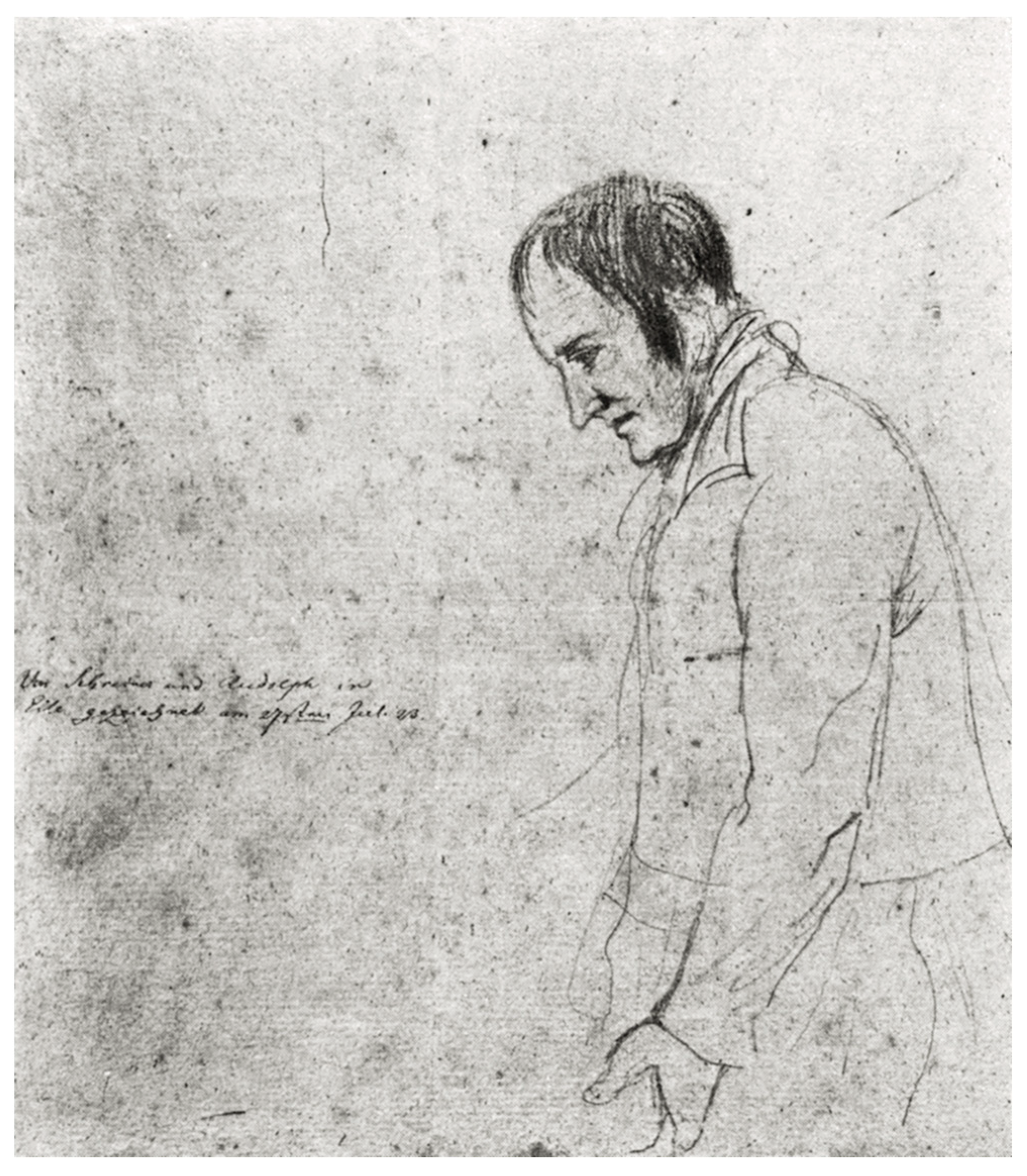
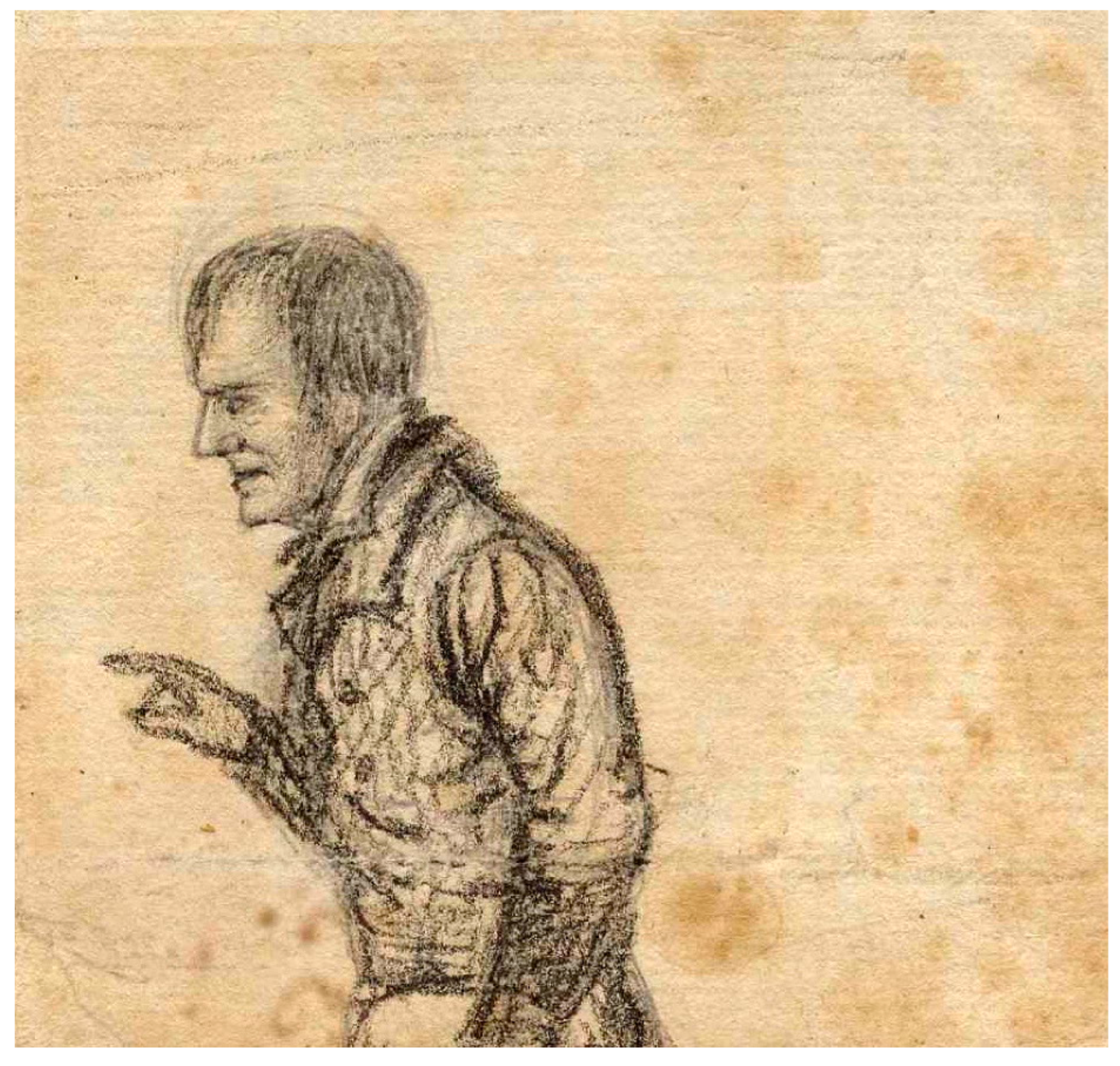


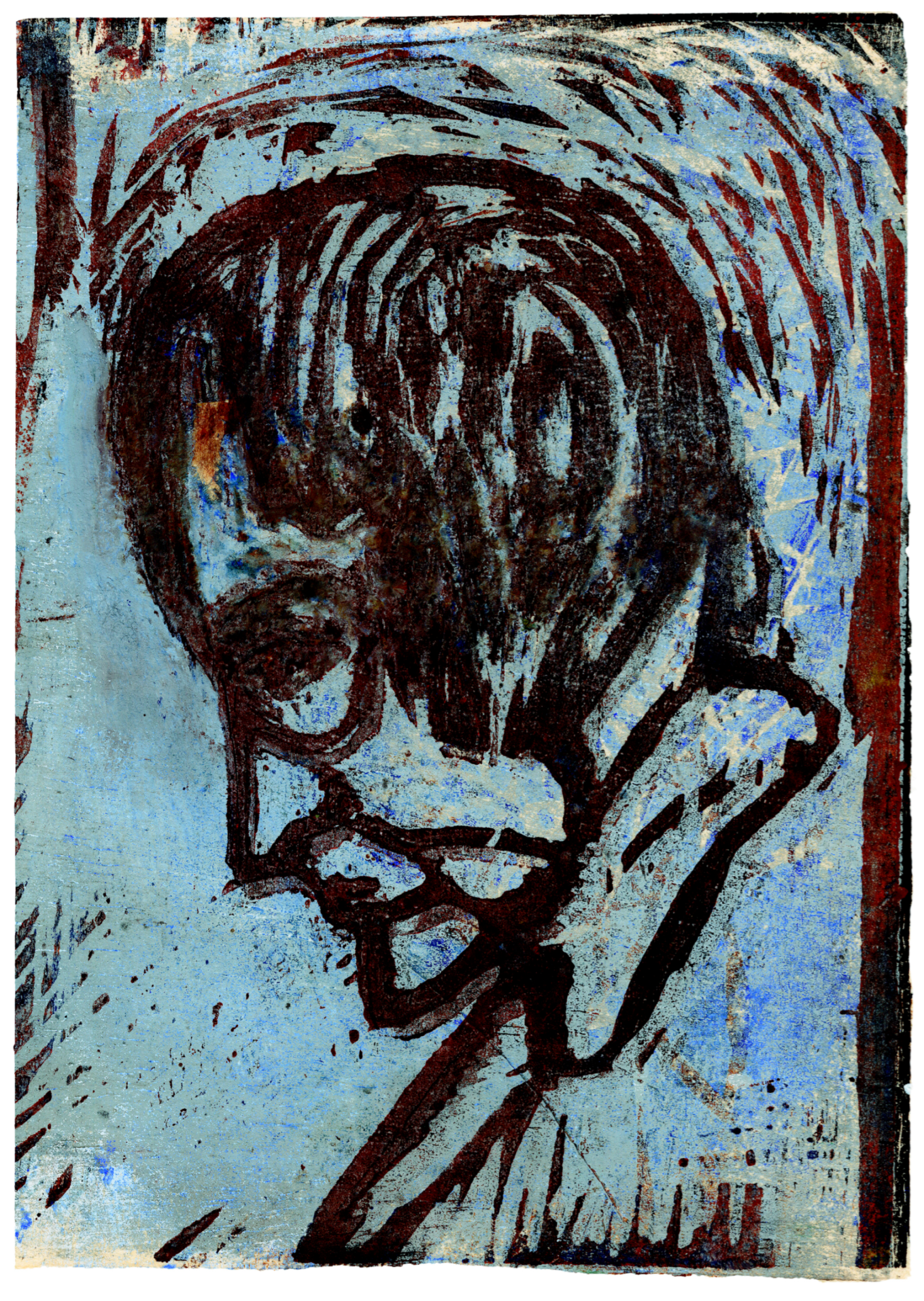
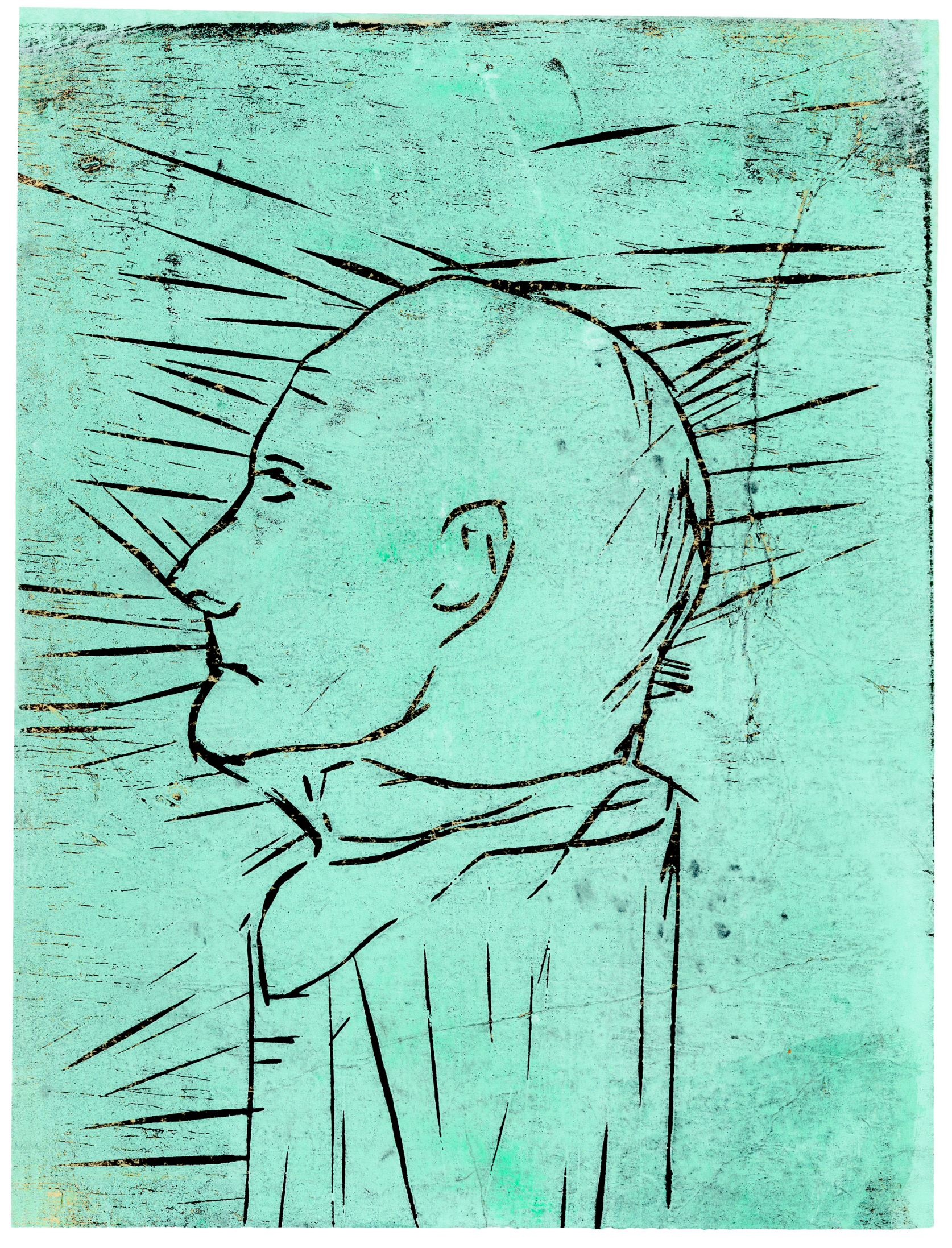

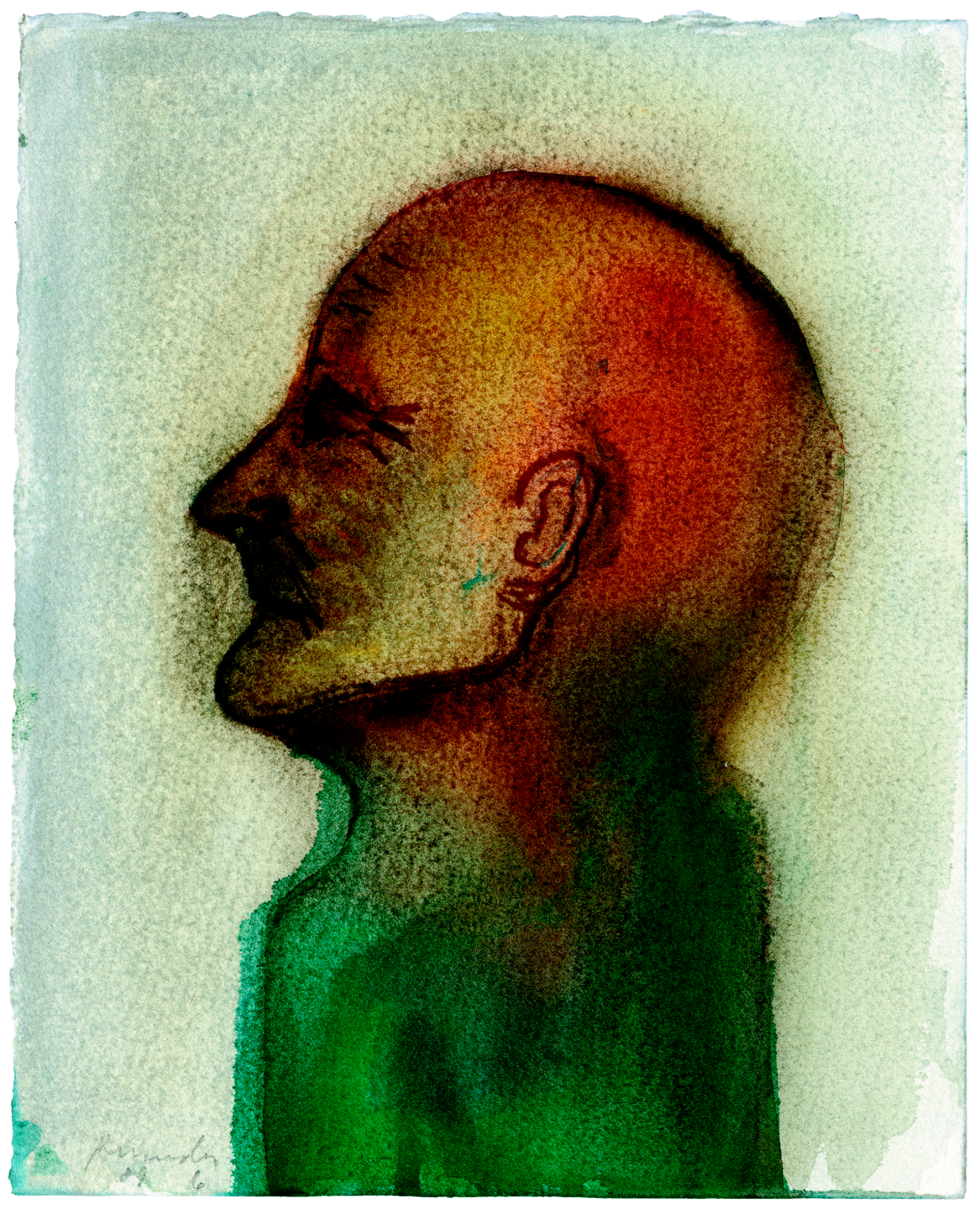

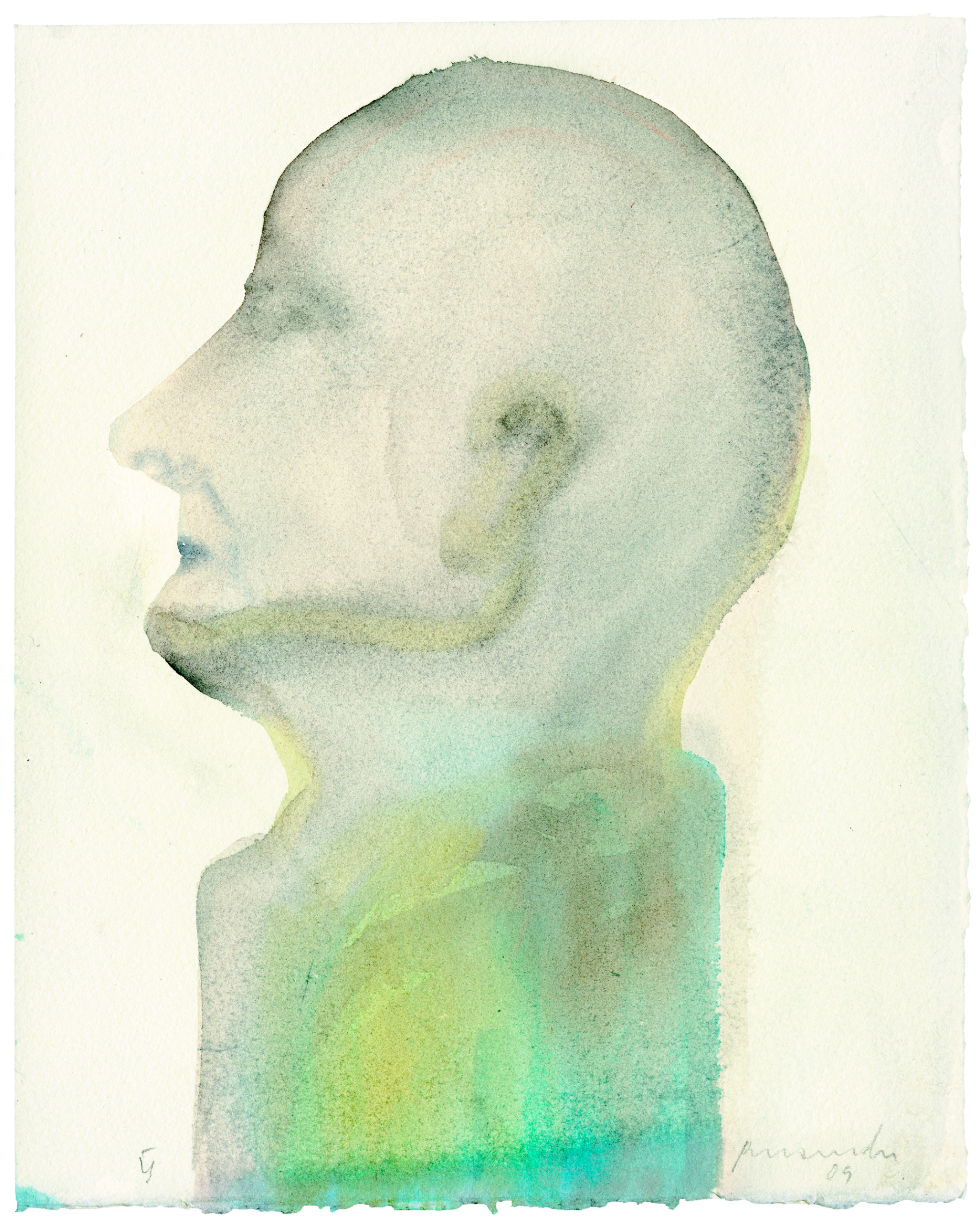
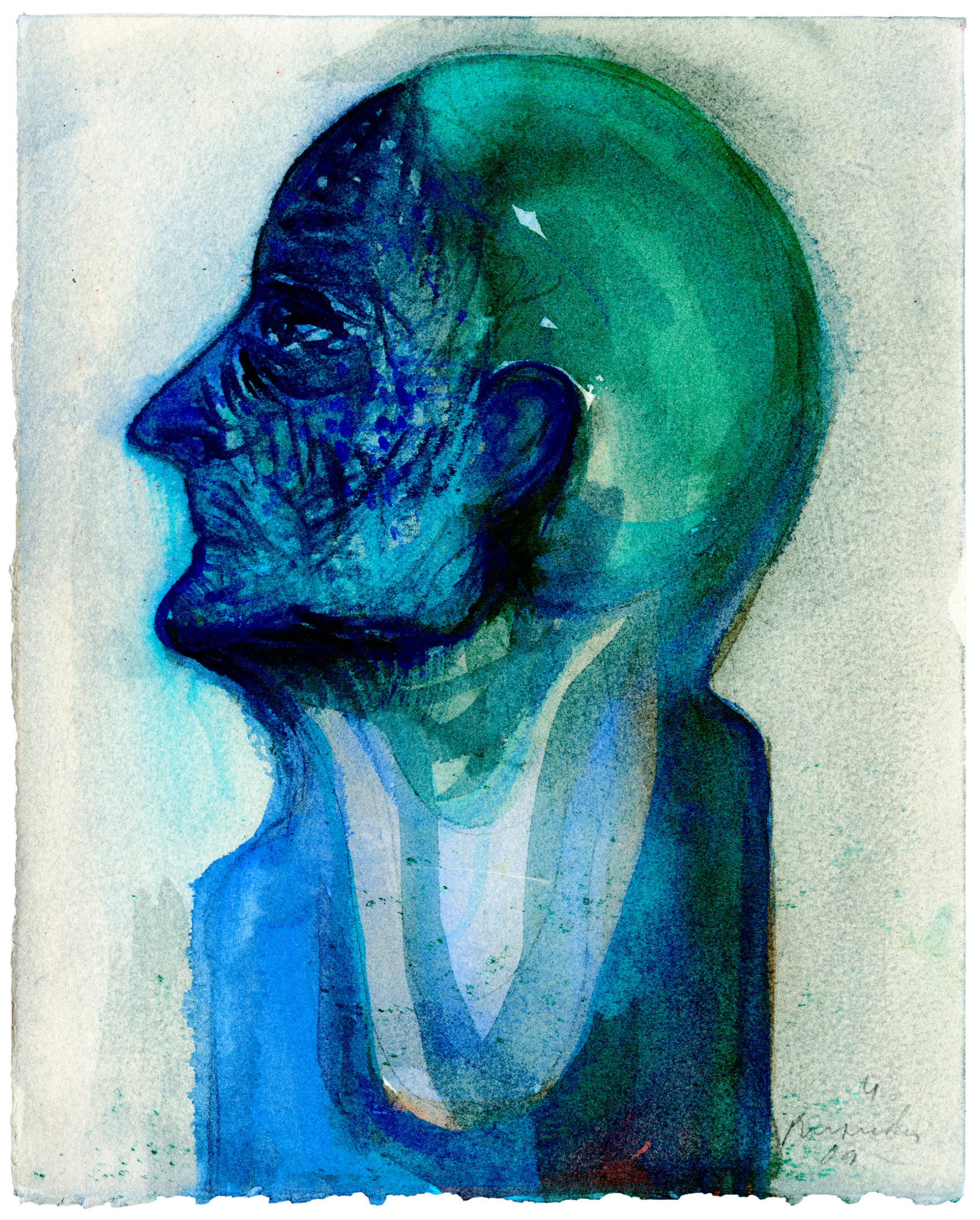

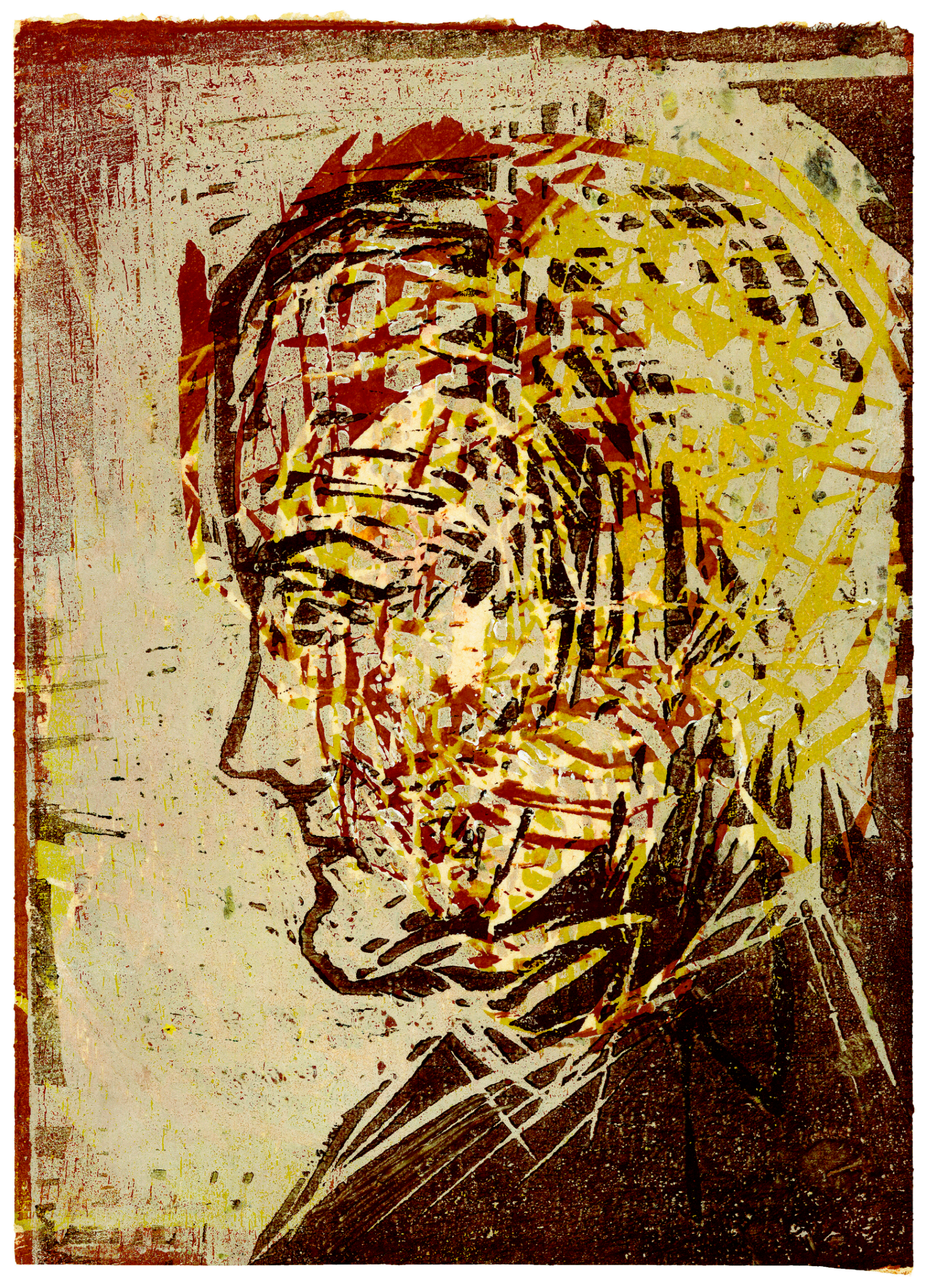
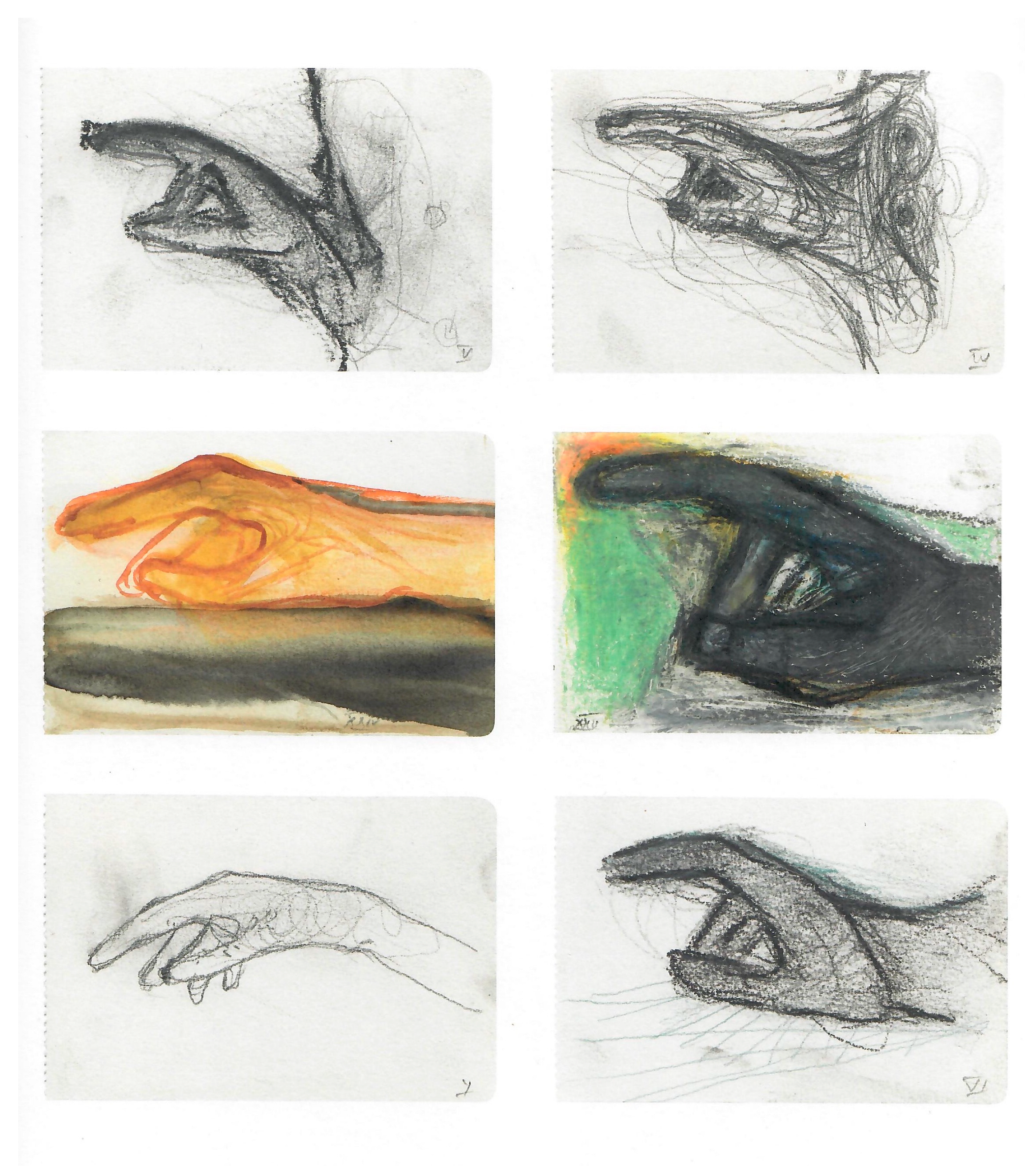
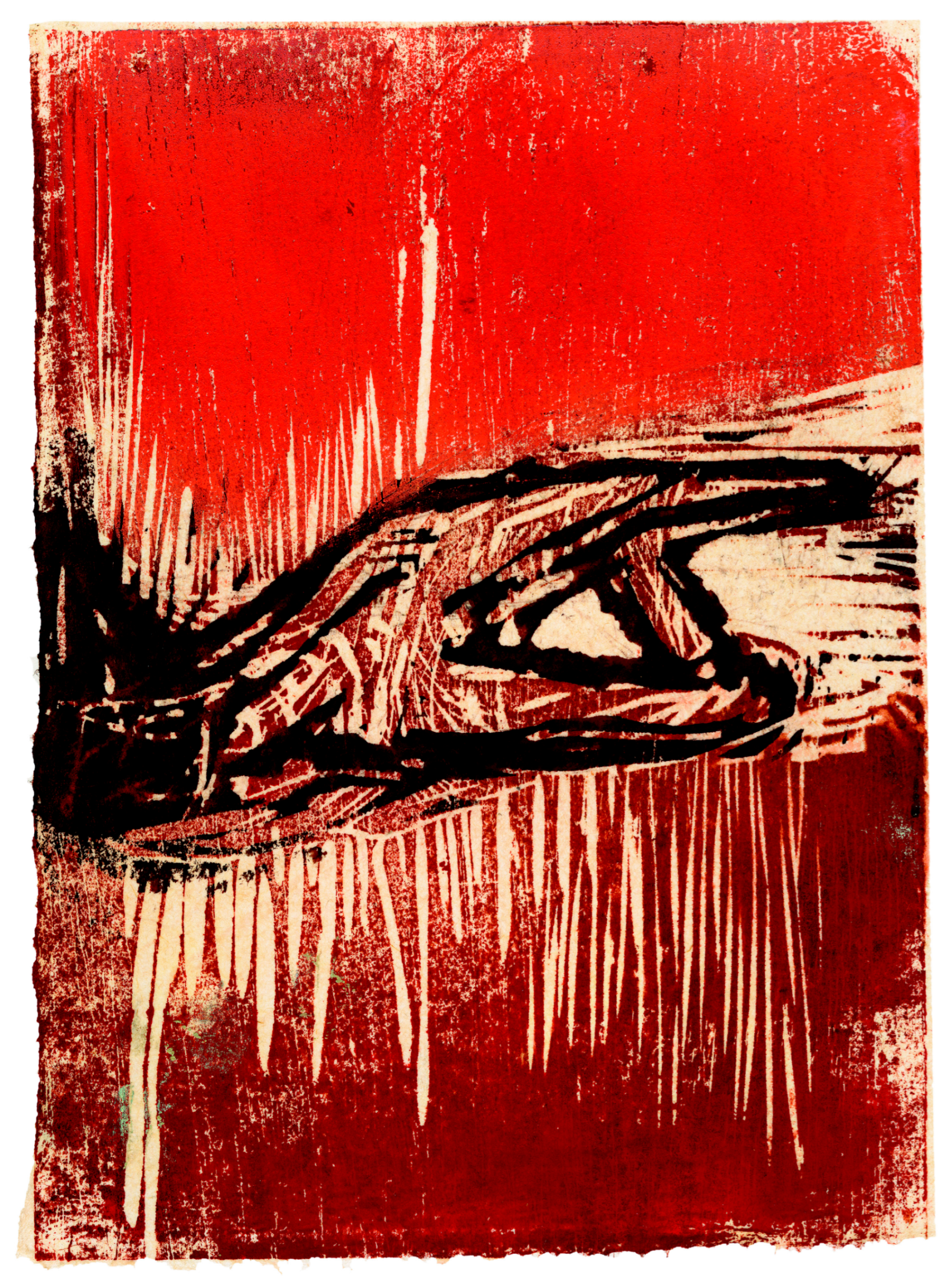
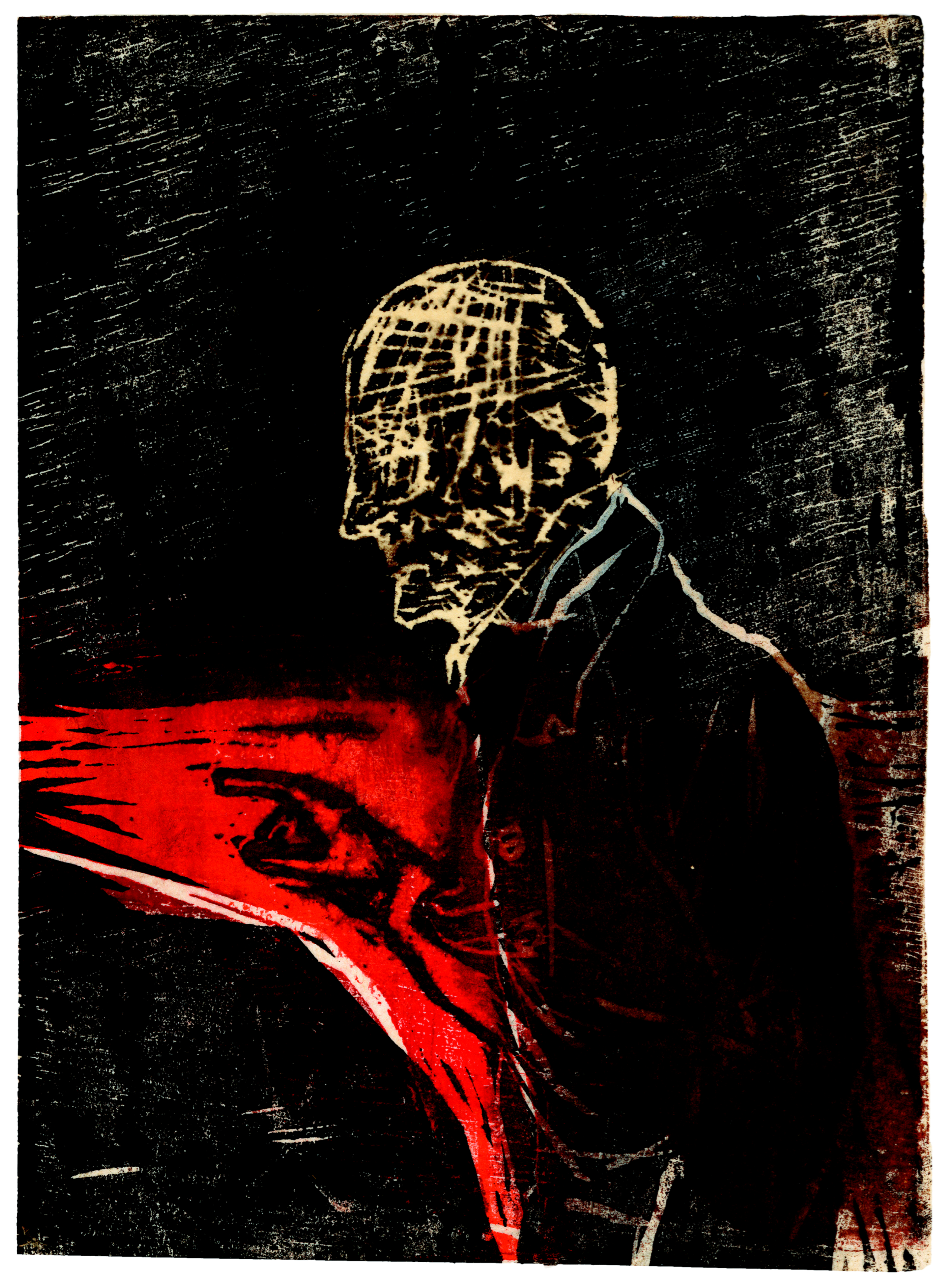
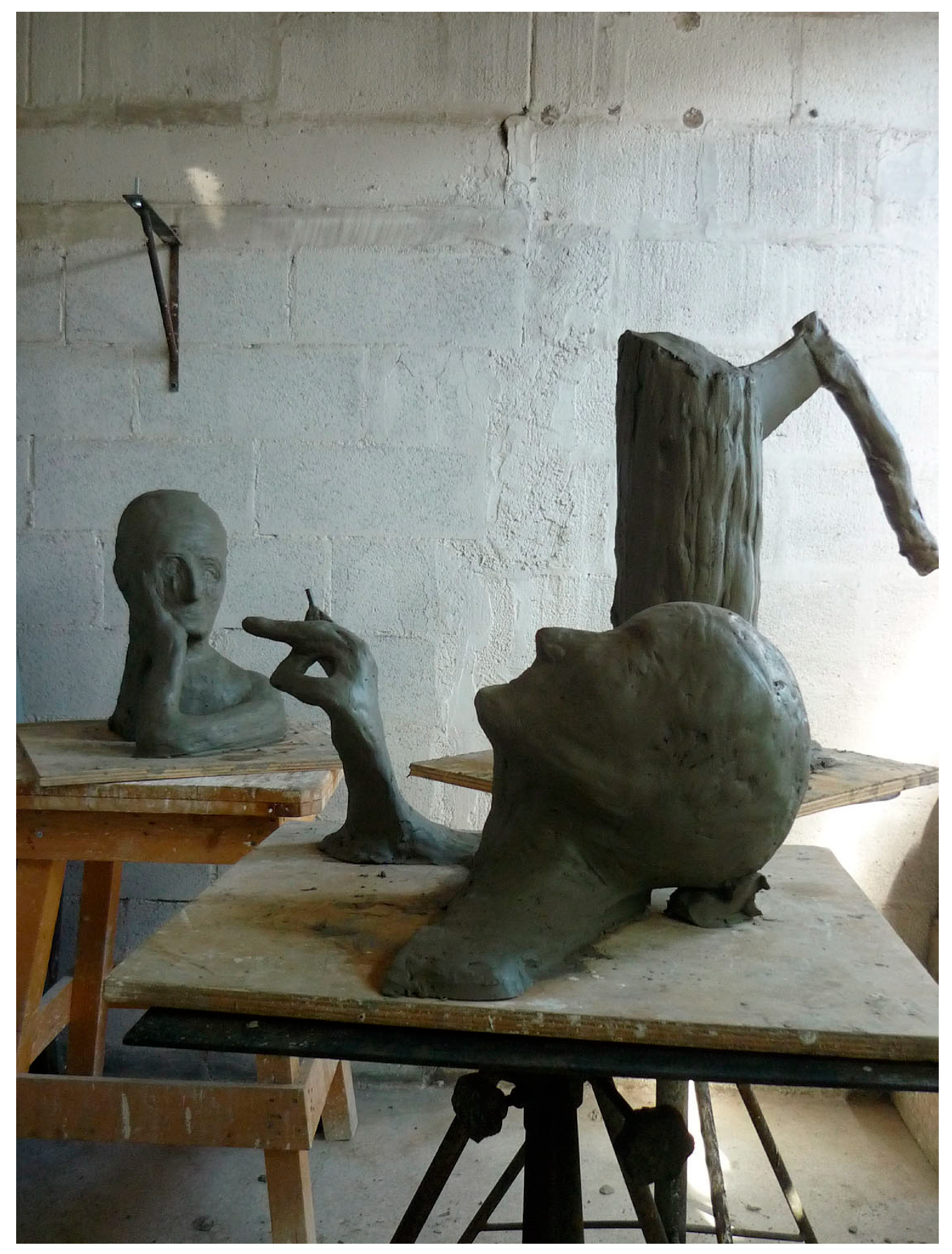
Disclaimer/Publisher’s Note: The statements, opinions and data contained in all publications are solely those of the individual author(s) and contributor(s) and not of MDPI and/or the editor(s). MDPI and/or the editor(s) disclaim responsibility for any injury to people or property resulting from any ideas, methods, instructions or products referred to in the content. |
© 2025 by the author. Licensee MDPI, Basel, Switzerland. This article is an open access article distributed under the terms and conditions of the Creative Commons Attribution (CC BY) license (https://creativecommons.org/licenses/by/4.0/).
Share and Cite
Lawitschka, V. Bildgespräche (Picture Conversations)—Peter Brandes and the Last Portraits of Hölderlin. Humanities 2025, 14, 181. https://doi.org/10.3390/h14090181
Lawitschka V. Bildgespräche (Picture Conversations)—Peter Brandes and the Last Portraits of Hölderlin. Humanities. 2025; 14(9):181. https://doi.org/10.3390/h14090181
Chicago/Turabian StyleLawitschka, Valérie. 2025. "Bildgespräche (Picture Conversations)—Peter Brandes and the Last Portraits of Hölderlin" Humanities 14, no. 9: 181. https://doi.org/10.3390/h14090181
APA StyleLawitschka, V. (2025). Bildgespräche (Picture Conversations)—Peter Brandes and the Last Portraits of Hölderlin. Humanities, 14(9), 181. https://doi.org/10.3390/h14090181



